Puerto Rico: the land that Columbus ‘discovered’

Revising history is all the rage these days. But the fact is some of what we were taught in grade school, if not wrong, was definitely exaggerated.
For example, on the website of the Yale-New Haven Teacher Institute, which is a partnership between Yale University and the New Haven Public Schools, you’ll find the following paragraph:
“Puerto Rico was discovered by Christopher Columbus, on November 19, 1493. This was his second voyage to claim lands for the rulers of Spain, Ferdinand and Isabella. When Columbus discovered Puerto Rico he had many more ships and men with him then he had on his first voyage in 1492 when he first discovered America.”
Not to minimize Columbus’ efforts, but the land he “discovered” was, as we know, already inhabited. After chancing upon the islands of the Caribbean while searching for a route to India – his first stop being in the Bahamas – he found people already living in the area, namely the Taino people.
While Columbus described the Tainos that he met as “naked as the day they were born,” the people – according to the Library of Congress – “had complex hierarchical religious, political, and social systems. Skilled farmers and navigators, they wrote music and poetry and created powerfully expressive objects.”
Still, it’s Columbus who is deemed the great discoverer, even in today’s Puerto Rico. In a city square called Plaza Colón, which is situated in Old San Juan, you’ll find a statue of the hardy Italian explorer. It was erected in 1893 as a way to mark the 400th anniversary of the first European arrival on the island.
I mention Columbus because, as I wrote recently, my wife and I spent eight days last month in the U.S. Territory of Puerto Rico. And on that first full day, weset out on our own voyage of discovery. Our goal, though, was hardly heroic. We merely were looking for a place to eat brunch.
In doing so, we walked down the Calle de la Fortaleza toward Plaza Colón, which sits near the base of Castillo San Cristóbal. The so-called “castillo” is actually a fortress, one that the National Park Service calls “the largest fortresst built in the Americas.”
And clearly the early Spanish settlers of San Juan needed protection, threatened as they were by the repeated attacks of both English and Dutch forces. It took a century and a half to complete construction, though when the project was done it was considered – again parroting the National Park Service – “a masterpiece of 18th century military engineering and innovation.”
On the day that we stood in the plaza, in the shadow of Columbus’ statue, an Ironman competition was taking place. We watched as runner after runner passed on the street that separated the Plaza Colón and the Castillo. They’d already swum 1.2 miles in Laguna del Condado, biked 56 miles from San Juan to Dorado and were now finishing their final 13.1-mile run through Old San Juan.
As one muscled guy jogged past, the sweat dripping off him in the bright sun, he called out, “Never do this.” I waved my acknowledgement. No worries, I thought.
We then continued on our way, looking for a place that Mary Pat had found online. Kaffe Haus was just what we wanted, a place that served both brunch and lunch (and cocktails) but also, most important to me, good coffee.
The same held true for Deaverdura, where we ate the following day. Specializing in authentic Puerto Rican dishes, the place takes no reservations. We had to wait maybe 15 minutes, yet the delay was worth it. Our “sampler plate” was filled with items, from alcapurrias (a fried fritter filled with meat) to plantains and rice.
Despite the blazing sun, which caused us to keep drinking as much water as we could, we found Old San Juan to be walkable – if you can handle the various steep streets and avoid tripping while navigating the cobblestone roadways.
We endured, though, even when Mary Pat arranged for us to take a walking tour. During the two-hour guided excursion, courtesy of Flavors Food Tours, we learned about the city’s history (and the many decades that Old San Juan was a complete walled fortress). Notable stops included La Casa Estrecha (or the Narrow House), which despite being a two-story building is only a mere five feet, three inches in width.
We also passed by a park known as the Bastión de Las Palmas, which is the remains of the high-walled fortress (complete with gun ports) that the Spanish built. Another curious part that we declined to enter was the Parque de Las Palomas, an enclosed area that is devoted solely to the feeding of pigeons. The reason: to keep the birds from fouling the city streets.
Appropriately enough, as I stood behind the gated entrance and watched birds flock around the legs of those feeding them, I heard one guy mutter, “Flying rats!”
Our walking tour ended at a spot where we could see another majestic fort in the distance, the Castillo San Felipe de Morro. We declined to visit because, at that point, the sun and the heat were wearing us down
Instead, we decamped to one of San Juan’s highlights: the cool interior of the Catedral de San Juan Bautista. Our visit served two purposes: One, it allowed Mary Pat to see the tomb of the Spanish explorer Juan Ponce de León, following up on her recent visit to Ponce de Leon’s Fountain of Youth Archaeological Park in St. Augustine, Florida.
Two, it paired nicely with our earlier visit to the Christopher Columbus statue. One adventurer was looking for India and the other, so goes the legend, was seeking to find the Fountain of Youth.
To paraphrase the Irish rock band U2, neither found what they were looking for.
Next up: Driving around the island.